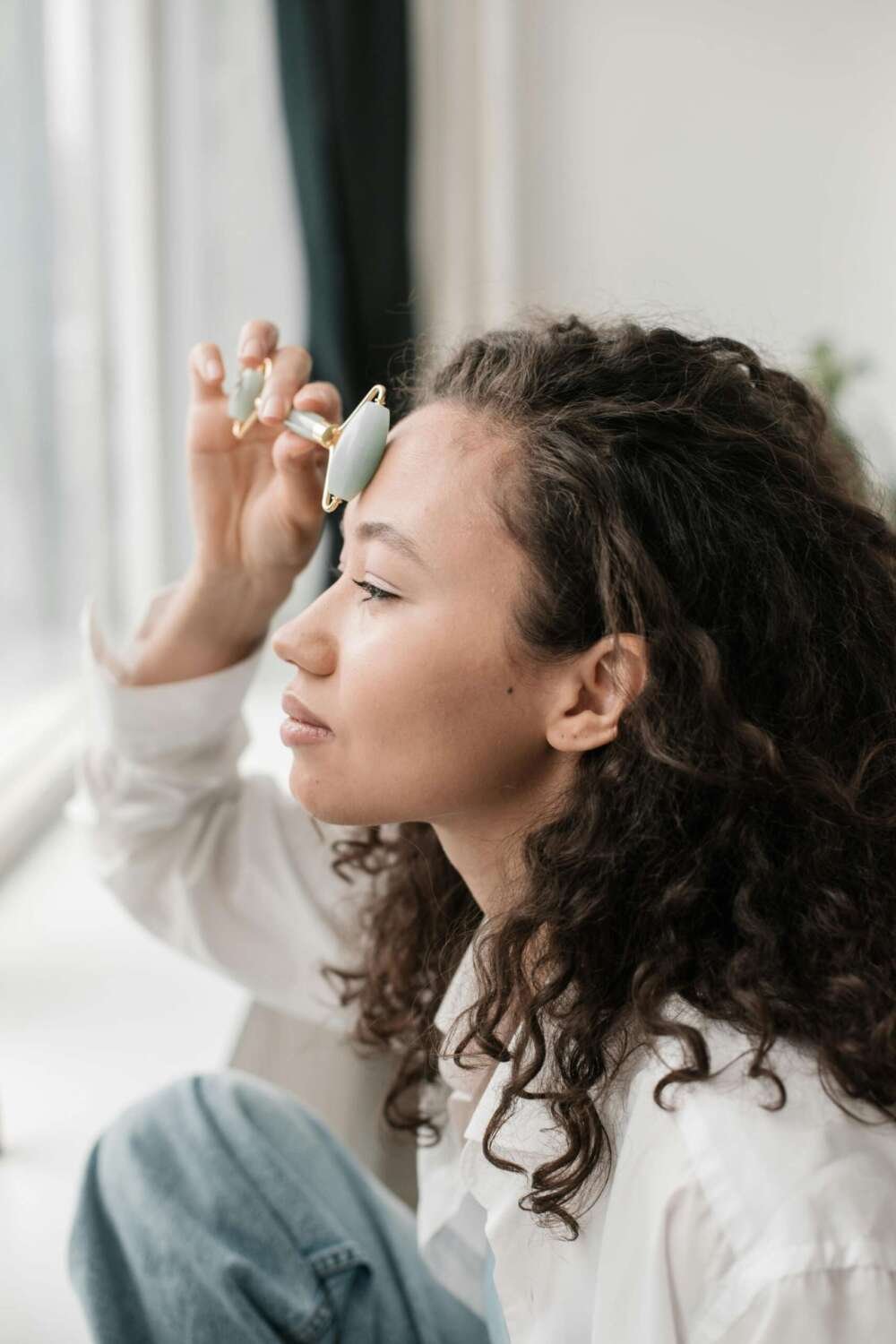An Expert Answers, “What Is Cortisol Face?”

Share This Article
‘Cortisol face’ has taken over social media. Dr. Hannah Kopelman debunks myths and shares facts and tips to get toned-looking skin.
| All products featured on The Wellness Feed are independently selected by our editors for their environmental and ethical impact. However, we may earn an affiliate commission when you buy something through our retail links. |
Social media has a way of bringing trends, medical phenomenons, and viral beauty hacks to our attention. If you’ve been scrolling through the feeds of your favorite beauty-tokers lately, you’ve likely come across the term ‘cortisol face’. You have also probably seen the before and after photos of women showing off how a simple viral hack took their features from ‘cortisol face’ to ‘snatched’. Are you curious whether these hacks can give you the cheekbones of your dreams or if it’s simply well-filtered clickbait. So are we. We asked Dr. Hannah Kopelman, a multi-hyphenate dermatologist, academic contributor, and podcast host, to share all she knows about this viral term.
To set the record straight, we’ll start with the facts- ‘cortisol face’ isn’t a real medical term. This look, rounder moon-shaped features, is often linked to high levels of cortisol, the body’s main stress hormone. So, what exactly is cortisol face? And how does it happen? Let’s explore what you need to know about this condition with Dr. Kopelman answering our most pressing questions about Tik-tok’s latest obsession.
What is cortisol?

While ‘cortisol face’ isn’t a medical term, the phenomenon people are referring to is very real. We often see facial changes like roundness, puffiness, and a flushed appearance in patients with persistently elevated cortisol, especially those with conditions like Cushing’s syndrome or those taking corticosteroids long-term. So yes, it’s a recognizable pattern, even if the label is informal.
Is cortisol a ‘stress hormone’?
Yes—it’s often called the body’s main “stress hormone” for a reason. Cortisol is released by the adrenal glands in response to stress and helps regulate everything from blood sugar to immune response. While it’s essential for survival, chronic overproduction—like in times of prolonged psychological or physical stress—can have unwanted side effects on both skin and body composition.
Does the amount of cortisol in your body change how your face looks?
Yes, absolutely. Cortisol is a hormone that plays a big role in many bodily processes, and chronically elevated levels can lead to visible changes in the face. Patients with high cortisol levels may notice facial puffiness, fluid retention, and fat redistribution—especially in the cheeks and neck. Over time, this can give the face a fuller, rounder appearance.
What lifestyle habits can make our face appear puffier and rounder?
A few things can contribute to facial puffiness: high salt intake, alcohol, lack of sleep, certain medications (especially steroids), hormonal fluctuations, and elevated cortisol levels. Inflammatory conditions and fluid retention can also make the face appear fuller. In some cases, medical conditions like thyroid disorders or kidney issues might be the culprit.
When should we consult a doctor if we notice our face looking puffier?
If the puffiness is persistent, worsening, or accompanied by other symptoms like weight gain in the upper body, fatigue, easy bruising, or menstrual irregularities, it’s definitely time to see a doctor. These could be signs of an underlying hormonal imbalance or a condition like Cushing’s syndrome that warrants further evaluation.
What is Cushing’s syndrome?
Cushing’s syndrome is a medical condition caused by chronically elevated cortisol levels, either from the body producing too much or from taking steroid medications. It leads to a characteristic “moon face,” central weight gain, thinning skin, muscle weakness, and other systemic issues. It’s important to diagnose early because untreated Cushing’s can lead to serious complications like hypertension, diabetes, and bone loss.
What can we do to make our face look ‘snatched’?
To achieve a more sculpted facial appearance, I recommend a combination of lifestyle adjustments and targeted skincare. Staying well-hydrated, reducing salt and sugar intake, getting consistent sleep, and managing stress can all help. Lymphatic drainage massage, facial gua sha, and firming skincare products can also make a difference. For more dramatic results, in-office treatments like facial contouring with filler, microneedling with RF, or even buccal fat removal may be considered.
